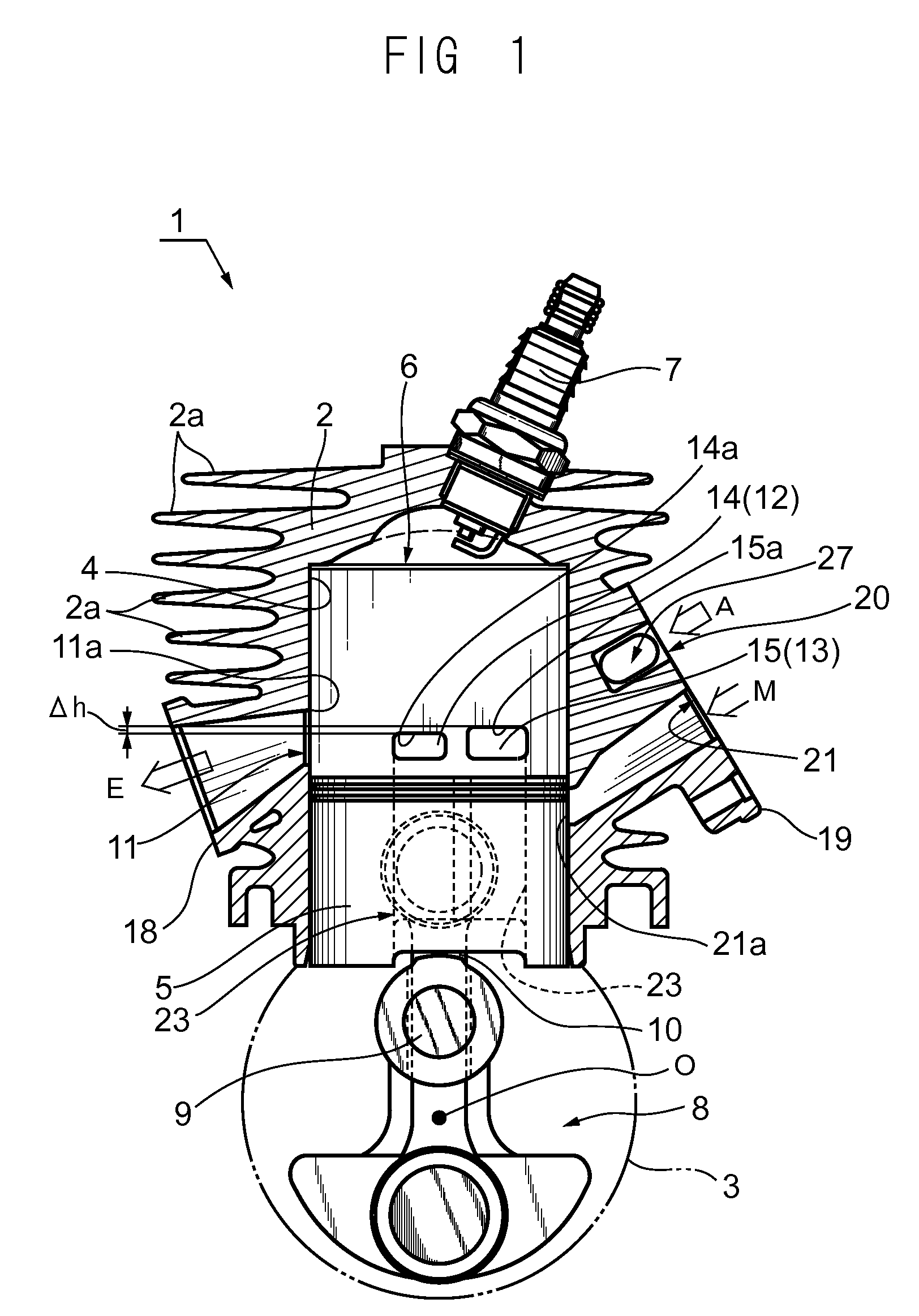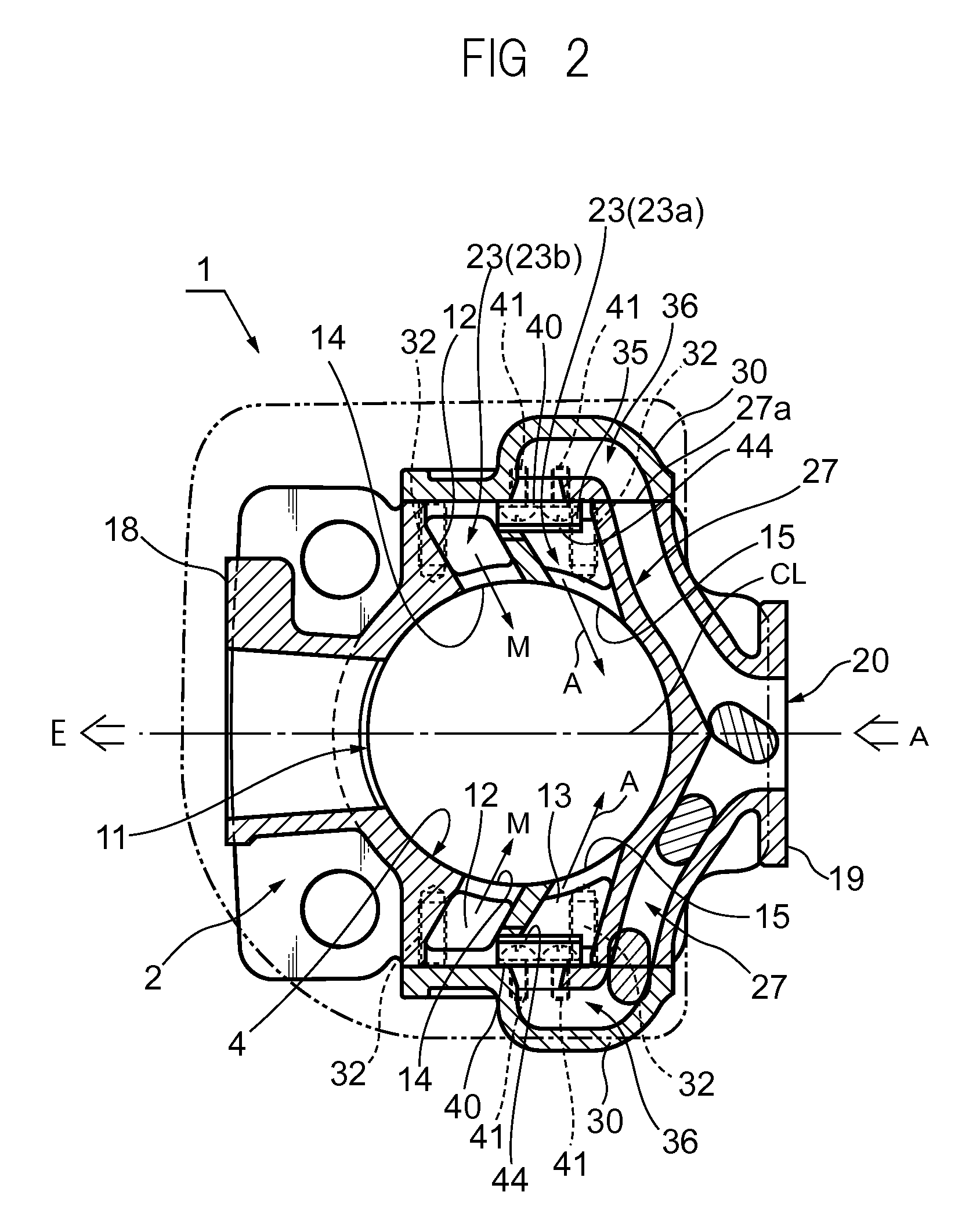Two-stroke internal combustion engine
a two-stroke, internal combustion engine technology, applied in the direction of lift valves, valve arrangements, cylinders, etc., can solve the problems of difficult to take effective measures to reduce emissions of two-stroke engines, and achieve the effect of preventing the phenomenon of “blow-by” and reducing the content of harmful emissions
- Summary
- Abstract
- Description
- Claims
- Application Information
AI Technical Summary
Benefits of technology
Problems solved by technology
Method used
Image
Examples
Embodiment Construction
[0033]A two-stroke internal combustion engine according to an embodiment of the present invention and some changes thereof are explained below with reference to the accompanying drawings. FIG. 1 and other drawings illustrate an example to be brought into operation as a single-cylinder. The two-stroke internal combustion engine generally designated with reference numeral 1 is a four-flow scavenging, air-cooled, compact two-stroke gasoline engine used in portable power working machines.
[0034]As shown in FIG. 1, the engine 1 includes a cylinder block 2 having cooling fins 2a, and a crank case 3 connected to the bottom of the cylinder block 2. A cylinder bore 4 formed in the cylinder block 2 fittingly receives a piston 5 to permit its reciprocal movement therein. The piston 5 defines a combustion chamber 6 in the cylinder bore 4.
[0035]The combustion chamber 6 has a squish-dome (hemispherical) shape. An ignition plug 7 is disposed at the top of the combustion chamber 6. In a crank chambe...
PUM
 Login to View More
Login to View More Abstract
Description
Claims
Application Information
 Login to View More
Login to View More - R&D
- Intellectual Property
- Life Sciences
- Materials
- Tech Scout
- Unparalleled Data Quality
- Higher Quality Content
- 60% Fewer Hallucinations
Browse by: Latest US Patents, China's latest patents, Technical Efficacy Thesaurus, Application Domain, Technology Topic, Popular Technical Reports.
© 2025 PatSnap. All rights reserved.Legal|Privacy policy|Modern Slavery Act Transparency Statement|Sitemap|About US| Contact US: help@patsnap.com



